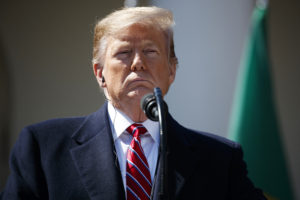A Multitrillion-Dollar Bridge to Nowhere in the Greater Middle East
The assassination of Taliban leader Mullah Akhtar Muhammad Mansour by a U.S. drone strike in Pakistan is the latest item on a long list of milestones briefly heralded as significant achievements only to prove much less than advertised. R~P~M / CC BY-ND 2.0
1
2
R~P~M / CC BY-ND 2.0
1
2
The rules of engagement currently governing air operations in Afghanistan are, in their view, needlessly restrictive. Air power “represents an asymmetric Western advantage, relatively safe to apply, and very effective.” (The piece omits any mention of incidents such as the October 2015 destruction of a Doctors Without Borders hospital in the Afghan provincial capital of Kunduz by a U.S. Air Force gunship.) More ordnance will surely produce “some version of victory.” The path ahead is clear. “Simply waging the Afghanistan air-power campaign with the vigor we are employing in Iraq and Syria,” the authors write with easy assurance, should do the trick.
When armchair generals cite the ongoing U.S. campaign in Iraq and Syria as a model of effectiveness, you know that things must be getting desperate.
Granted, Petraeus and O’Hanlon are on solid ground in noting that as the number of U.S. and NATO troops in Afghanistan has decreased, so, too, has the number of air strikes targeting the Taliban. Back when more allied boots were on the ground, more allied planes were, of course, overhead. And yet the 100,000 close-air-support sorties flown between 2011 and 2015 — that’s more than one sortie per Taliban fighter — did not, alas, yield “some version of victory.” In short, we’ve already tried the Petraeus-O’Hanlon take-the-gloves-off approach to defeating the Taliban. It didn’t work. With the Afghanistan War’s 15th anniversary now just around the corner, to suggest that we can bomb our way to victory there is towering nonsense.
In Washington, Big Thinking and Small
Petraeus and O’Hanlon characterize Afghanistan as “the eastern bulwark in our broader Middle East fight.” Eastern sinkhole might be a more apt description. Note, by the way, that they have nothing useful to say about the “broader fight” to which they allude. Yet that broader fight — undertaken out of the conviction, still firmly in place today, that American military assertiveness can somehow repair the Greater Middle East — is far more deserving of attention than how to employ very expensive airplanes against insurgents armed with inexpensive Kalashnikovs.
To be fair, in silently passing over the broader fight, Petraeus and O’Hanlon are hardly alone. On this subject no one has much to say — not other stalwarts of the onward-to-victory school, nor officials presently charged with formulating U.S. national security policy, nor members of the Washington commentariat eager to pontificate about almost anything. Worst of all, the subject is one on which each of the prospective candidates for the presidency is mum.
From Secretary of Defense Ashton Carter and Chairman of the Joint Chiefs of Staff General Joseph Dunford on down to the lowliest blogger, opinions about how best to wage a particular campaign in that broader fight are readily available. Need a plan for rolling back the Islamic State? Glad you asked. Concerned about that new ISIS franchise in Libya? Got you covered. Boko Haram? Here’s what you need to know. Losing sleep over Al-Shabab? Take heart — big thinkers are on the case.
As to the broader fight itself, however, no one has a clue. Indeed, it seems fair to say that merely defining our aims in that broader fight, much less specifying the means to achieve them, heads the list of issues that people in Washington studiously avoid. Instead, they prattle endlessly about the Taliban and ISIS and Boko Haram and al-Shabab.
Here’s the one thing you need to know about the broader fight: there is no strategy. None. Zilch. We’re on a multi-trillion-dollar bridge to nowhere, with members of the national security establishment more or less content to see where it leads.
May I suggest that we find ourselves today in what might be called a Khe Sanh moment? Older readers will recall that back in late 1967 and early 1968 in the midst of the Vietnam War, one particular question gripped the national security establishment and those paid to attend to its doings: Can Khe Sanh hold?
Now almost totally forgotten, Khe Sanh was then a battlefield as well known to Americans as Fallujah was to become in our own day. Located in the northern part of South Vietnam, it was the site of a besieged and outnumbered Marine garrison, surrounded by two full enemy divisions. In the eyes of some observers, the outcome of the Vietnam War appeared to hinge on the ability of the Marines there to hold out — to avoid the fate that had befallen the French garrison at Dien Bien Phu slightly more than a decade earlier. For France, the fall of Dien Bien Phu had indeed spelled final defeat in Indochina.
Was history about to repeat itself at Khe Sanh? As it turned out, no… and yes.
The Marines did hold — a milestone! — and the United States lost the war anyway.
In retrospect, it seems pretty clear that those responsible for formulating U.S. policy back then fundamentally misconstrued the problem at hand. Rather than worrying about the fate of Khe Sanh, they ought to have been asking questions like these: Is the Vietnam War winnable? Does it even make sense? If not, why are we there? And above all, does no alternative exist to simply pressing on with a policy that shows no signs of success?
Today the United States finds itself in a comparable situation. What to do about the Taliban or ISIS is not a trivial question. Much the same can be said regarding the various other militant organizations with which U.S. forces are engaged in a variety of countries — many now failing states — across the Greater Middle East.
But the question of how to take out organization X or put country Y back together pales in comparison with the other questions that should by now have come to the fore but haven’t. Among the most salient are these: Does waging war across a large swath of the Islamic world make sense? When will this broader fight end? What will it cost? Short of reducing large parts of the Middle East to rubble, is that fight winnable in any meaningful sense? Above all, does the world’s most powerful nation have no other choice but to persist in pursuing a manifestly futile endeavor?
Try this thought experiment. Imagine the opposing candidates in a presidential campaign each refusing to accept war as the new normal. Imagine them actually taking stock of the broader fight that’s been ongoing for decades now. Imagine them offering alternatives to armed conflicts that just drag on and on. Now that would be a milestone.
Andrew J. Bacevich, a TomDispatch regular, is author of America’s War for the Greater Middle East: A Military History.
Follow TomDispatch on Twitter and join us on Facebook. Check out the newest Dispatch Book, Nick Turse’s Next Time They’ll Come to Count the Dead, and Tom Engelhardt’s latest book, Shadow Government: Surveillance, Secret Wars, and a Global Security State in a Single-Superpower World.
Copyright 2016 Andrew Bacevich Your support matters…Independent journalism is under threat and overshadowed by heavily funded mainstream media.
You can help level the playing field. Become a member.
Your tax-deductible contribution keeps us digging beneath the headlines to give you thought-provoking, investigative reporting and analysis that unearths what's really happening- without compromise.
Give today to support our courageous, independent journalists.









You need to be a supporter to comment.
There are currently no responses to this article.
Be the first to respond.